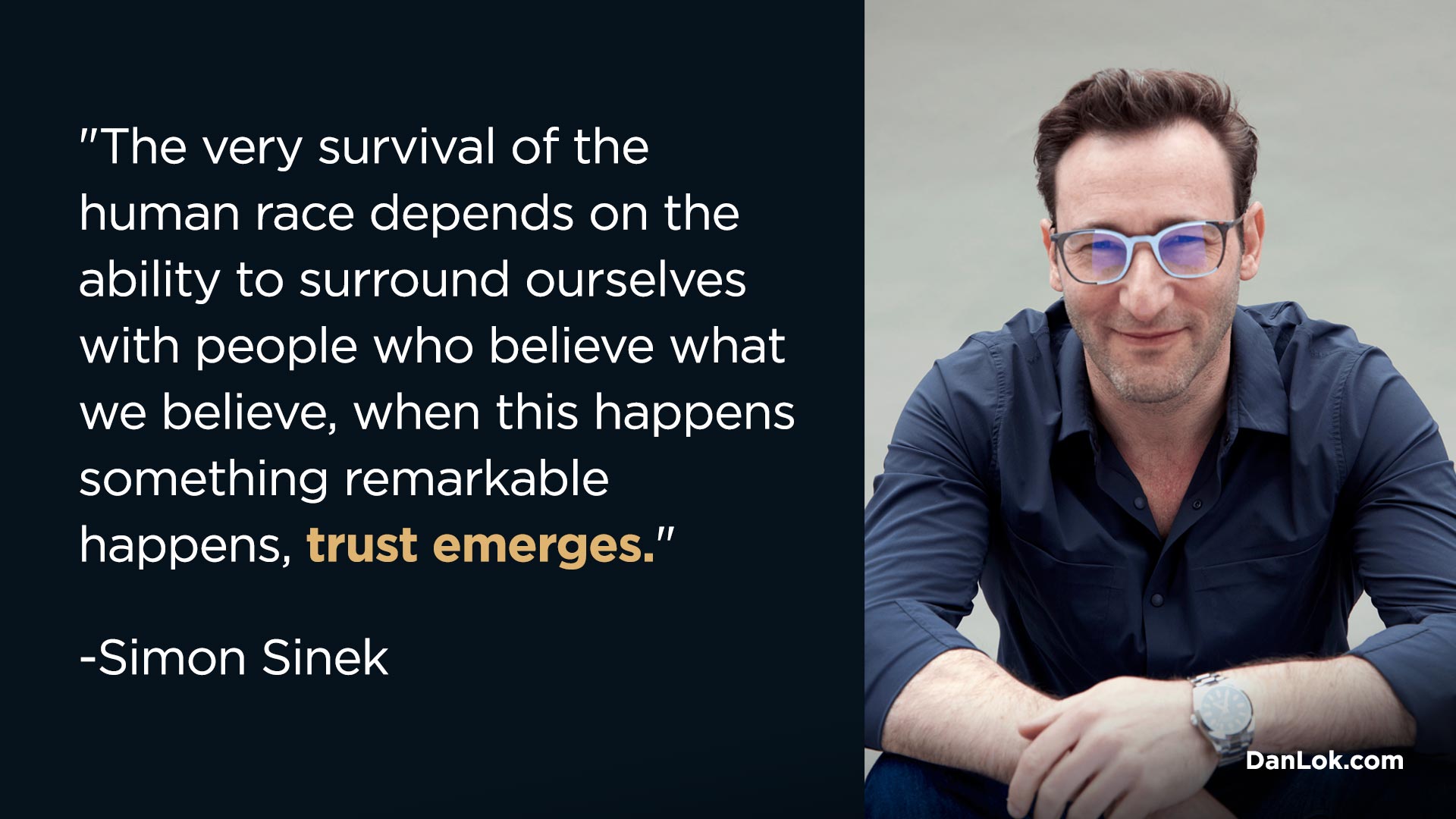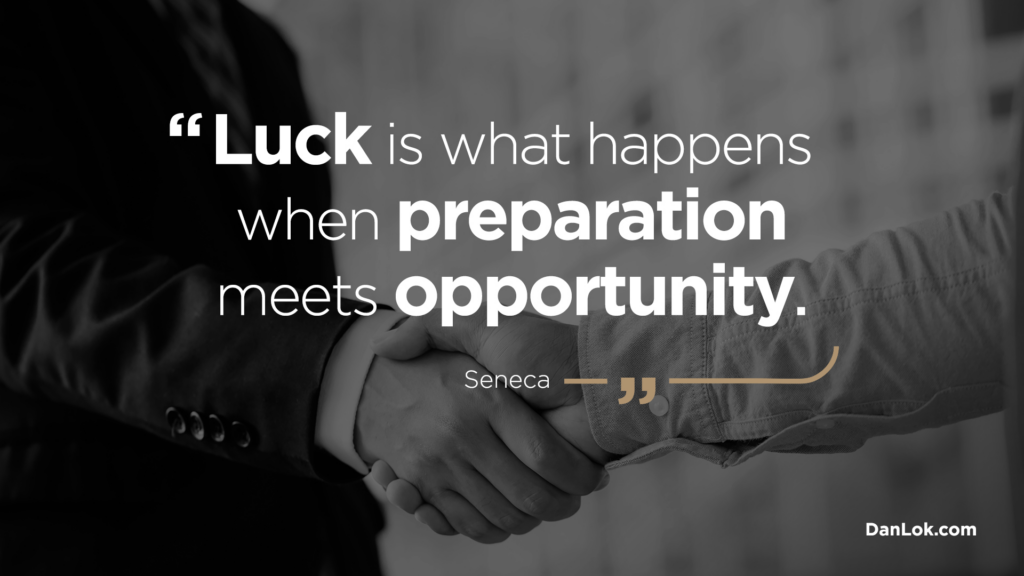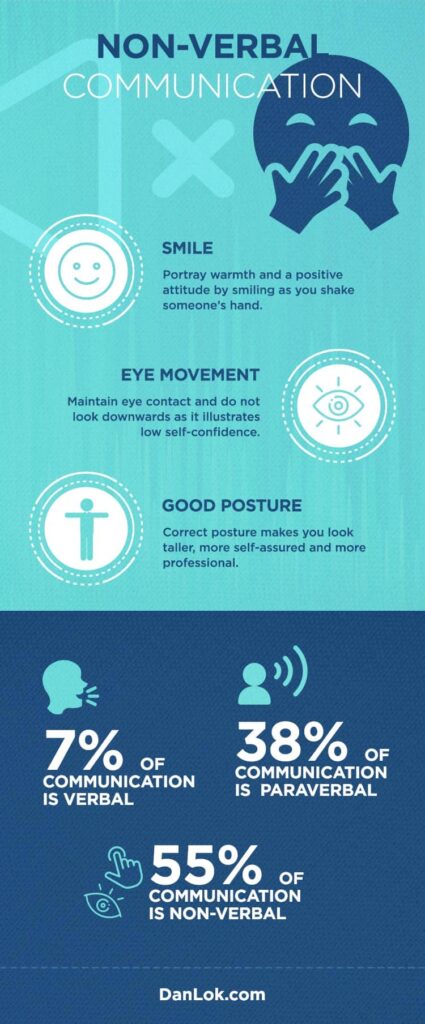One of the secrets to building a successful business is learning how to sell your services at a higher price. However, this can prove to be challenging in today’s saturated market. If you are like most entrepreneurs, you understand that it can sometimes be difficult to read and handle your prospects. While some relationships are smooth sailing, others are rockier and require a lot more finesse.
Every prospect you encounter will be unique. Some will understand your value proposition from the start, while others will be quite stubborn. Why do you think this is? The answer is simple. It’s very easy for your prospect to compare your services to that of your competitors. They think that if someone else is offering the same service for a cheaper price, why can’t you too?
For example, let’s say you are looking to purchase a cleaning service for your home. You reach out to five different businesses in your town, and they all tell you they can do it as soon as possible for a great price. How do you know which cleaning company will provide you with the best service? This question is the reason why businesses compete to win their clients. Whether you are selling to other companies or to consumers, selling services involves selling yourself and your team’s expertise.
Bob Hooey, accredited speaker and author said:
“If you are not taking care of your customer, your competitor will”.
Start by Looking at Your Prospects
Learning how to sell your services at a higher price is a difficult feat to overcome. If you do a quick Google search, you would see that many publications begin to answer this question by suggesting you work for as many clients as possible and build a good reputation.
We couldn’t disagree with this idea more. Imagine short-selling yourself just to earn more business. Do you really think this is the way to prosperity? Of course not.
So you might be asking yourself, how can I sell my services for a higher price? The answer is right in front of you. Take a look at your prospects – do you see something they all have in common?
That’s right, you got it – prospects are human too. This means that they also think in a rational way. In order to earn their business, you need to connect with them on an emotional level and make it clear why you are worth what you say you are.
If you want to charge more for your services and ask for what you are worth, you need to change your mindset of how you communicate with your prospects. In this article, we will cover three powerful tools you can use when learning how to sell your services for a higher price.
1. Perfect your pitch

The first step you can use when learning how to sell your services for a higher price is to perfect your pitch. This has to be the most important asset any sales professional can have.
The challenge is, many businesses sound the same as their competitors. More often than not, they only differ by offering their services at a lower price. We already learned that this is not the way to go.
Let me ask you a question. Do you think the market is oversaturated with businesses right now? A recent study by Statisca concluded that in March of 2019, there were 774,725 service businesses in the United States that were less than 1 year old.
This staggering statistic should not scare you. Instead, it should motivate you. Why? Because despite there being over 700,000 service businesses out there, it’s possible to be a leader in your niche.
You are Not Selling the Problem, Not the Solution
You see, we live in a world where our prospects are bombarded with cold calls and advertisements every single day. Is your game plan to treat your prospects the same way your competition treats them? Is your game plan to have your well thought out pitch be thrown away in the garbage? Don’t make this mistake.
When learning how to sell your services at a higher price, you need to find a way to bridge this communication gap. You need to convince your prospects that you are not like everyone else. So how can you do this? It all starts off by building a relationship with them.
You are selling the problem, not the solution. Share on XProspects are not looking for a solution, they are looking for a way to buy themselves out of a specific problem. For example, let’s say you are a freelance copywriter. What problem are you trying to solve? You could say: My name is Susan, and I write research-driven content that is strictly focused on helping businesses get results.
This is how to sell your services at a higher price. Are you ready to craft your perfect pitch? Below we are going to show you how. Let’s get started.
How To Sell Your Services at a Higher Price

When learning how to sell your services for a higher price, your first impression should be your primary focus. Instead of lowering your price to match your competition, craft a stellar pitch to show your prospects why you are worth it. Here is the four-part formula to writing a stellar pitch:
Scarcity
When you hear the word scarcity, what’s the first thought that comes to your mind? We think about something that is highly in demand, but is limited in its availability. Prove to your prospects that there is no one like you in the market. And if they want to do business with you, they need to act now.
Exclusivity
How can you incorporate exclusivity into your marketing strategy? A simple way to do so is to include words that trigger a feeling of urgency or demand. You definitely aren’t the only service provider in the entire market, and probably not the best. But this doesn’t mean that you can’t advertise yourself to be if you believe you can deliver on the value.
Value
When learning how to sell your services at a higher price, you need to know your competition better than your prospects do. If you are charging your customers $500 an hour for your services, explain how you got to that number.
Results
Do you remember what we said earlier in this article? Your prospects are looking to solve a problem, not find a solution. What results can you promise to your prospects? If you have run successful campaigns in the past, don’t be scared to share those results.
Albert Einstein, German physicist and theorist once said:
“If you can’t explain it simply, you don’t understand it well enough”.
So you’ve perfected your pitch, the next step is to deliver it to the market. Are you ready?
2. Practice Asking for Higher Prices

The second step you can use when learning how to sell your services for a higher price is to practice asking for a higher price. In the previous section of this article, we broke down the components to crafting a stellar pitch. Now you need to prepare yourself to deliver that pitch to the market.
There are three kinds of prospects:
- The few who know everything
- The handful that know next to nothing
- The majority who know just enough to be dangerous
Out of these three personas, which one do you think is your target audience? That’s right. Your target audience is the majority who know just enough to be dangerous. Why? Because they understand what they are looking for and know what they are talking about.
While this may seem a bit counterintuitive, you want to sell your services to these prospects because you can easily build a connection with them. It also allows you to leverage a very useful tool Dan teaches to all of my students. What is it? It’s called taking control of the conversation.
Take Control of The Conversation
Because you are asking for a higher price, there is a very good chance you will need to close some of your prospects over the phone. However, this should not change how you deliver your message.
The second you let the prospect take control of the conversation, you have lost out on that deal. This means you should take the time now to master your pitch, anticipate questions, and prepare answers for your sales call. Jim Rohn, American entrepreneur and author said:
“Either you run the day or the day runs you”.
Here’s the truth. When learning how to sell your services at a higher price, you need to prepare for everything. In the business world, preparation is king. In fact, if you have as many possible responses as you can think of memorized for when the prospect brings it up.
Does this mean you’re not open to negotiation? Of course not. This just means that you have the tools to be in control of the conversation and steer it in the direction you so choose to.
Three-Step Formula to Perfect Your Craft

When learning how to sell your services for a higher price, asking for more can sometimes be intimidating. Below we have outlined three exercises you can do to help you prepare for a successful sales call.
Practice in front of a mirror
To prepare for this moment, practice your pitch in front of a mirror. Take notes of your body language, your facial expressions, and the tone of your voice. Do these features exude confidence?
If you are closing a prospect in person, pay attention to what you do as you speak? What are you looking at, what are your hands doing, what emotions are you showing?
Record yourself
As you practice asking for a higher price, record yourself. When you listen back to the recording, ask yourself if you sound confident or not? State the price you want loud and proud, don’t show any signs of uncertainty.
If you are looking to ask for $500 for an hour of your services. Make sure you don’t sound nervous. Ask for the $500 as if you were asking what the weather is today. Show your prospect that you are confident in the value you bring to the table.
Practice until it becomes second nature
Once you’ve figured out exactly what you are going to say, and how you are going to present it, practice asking for a higher price until it has become second nature to you. A recent study by Very Well Minded concluded that practice accounts for about 80% of the differences between elite and amateur performance.
This is a strategy Dan Lok has used to help him retain the highest level of productivity each day. Once you’ve mastered your pitch, and are confident in asking for a higher price, what’s the final piece to the puzzle?
3. Build a Bullet-Proof Pricing Model

The third and final step you can use when learning how to sell your services for a higher price is to build a bullet-proof pricing model. If you have prepared and delivered an exceptional pitch, this is the final step you need to ensure you have a prosperous career in the service industry.
What do you think a bullet-proof pricing model is? Let’s look at an example. What if your goal was to make $100,000 this year. Here are three possible options for you to choose from:
- Provide a service to 1,000 clients and charge them $100 each
- Provide a service to 100 clients and charge them $1,000 each
- Provide a service to 10 clients and charge them $10,000 each
Which one of these options looks best? We prefer to provide a high-quality service to fewer clients and in return charge more. Why? Because everyone in the market has a limited amount of one thing – time.
We each only have 24 hours in a day. Would you rather be frantically looking at trying to close 3-4 clients a day in order to meet your quota, or would you rather just have to close one client a month?
The answer here is simple. And in order to get to this level, you need to get high ticket clients. This is how to sell your services at a higher price – get clients that earn and pay a higher price. So you might be asking yourself – how can I do business with these high ticket clients?
The Art of High Ticket Closing
In order to close a high ticket client, you must learn the art of being a high ticket closer. These are not sleazy salespeople who want to make a buck, these are professionals who want to provide exceptional service.
As a high ticket closer, you don’t chase clients. Instead, clients come to you. Why? Because you are positioned to serve those who have high business standards and integrity. What would it mean to you if you could close significantly more deals with much less effort?
With these three powerful tools, you can become an unstoppable force in your niche. If you’re ready to make this year the most successful year of your life, now is the time to get started. The power is now in your hands.
Summary
One of the secrets to building a successful business is learning how to sell your services at a higher price. In this competitive market, some prospects will understand your value propositions while others will be quite stubborn. In order to bridge this gap, you need to earn their respect and prove your value to them. From there, it’s essential that you set up a pricing model that fits your business needs.
Here are three powerful tools you can use when learning how to sell your services at a higher price.
- Perfect your pitch
Many businesses sound the same as their competitors. In order to be a leader in your niche, you need to bridge this communication gap and convince your prospects that you are not like everyone else.
- Practice asking for higher prices
It’s much better to be over-prepared than underprepared. Take the time to practice your pitch over and over again until you have mastered it. Anticipate questions your prospects may ask and prepare professional answers.
- Build a bullet-proof pricing model
If you want to provide high-quality services to fewer clients, this is the way to go. This simple model utilizes the art of high ticket closing so you can position yourself to work with the highest quality clients.
Dan has prepared a masterclass just going over how you can use a high-income skill to transform your life and your business. If you’re ready to learn how millions of Dan Lok’s students have mastered this lucrative skill, click here to start now.



























